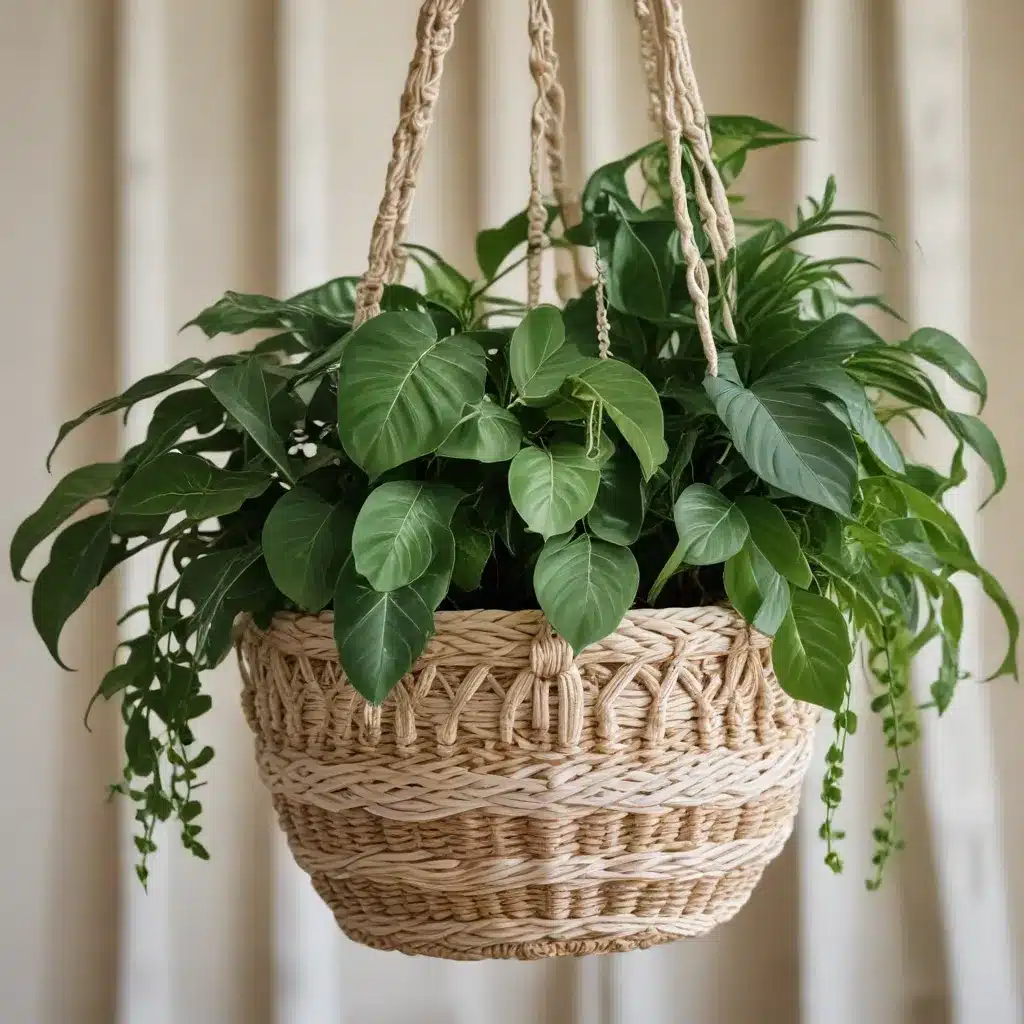
At Crooked Pines Farm, we believe in harnessing the power of creativity to celebrate the bucolic beauty that surrounds us. Crafting has long been a cherished tradition, allowing farm families to transform everyday materials into functional works of art. In this article, we’ll explore two popular farmhouse-inspired DIY projects: handwoven baskets and macrame plant hangers.
Handwoven Baskets
The art of basket weaving has deep roots in agricultural communities, where baskets served as essential tools for gathering harvests, transporting goods, and presenting farm-fresh bounty. Today, the humble basket has evolved into a versatile home decor piece, gracing farmhouse-style interiors with its rustic charm.
To get started, aspiring basket weavers can choose from a variety of natural fibers, each imparting unique textures and tones. Willow, rattan, and pine needles are popular options, offering pliable yet durable strands that lend themselves well to intricate patterns. Alternatively, you can experiment with locally sourced materials, such as dried corn husks or repurposed burlap from feed sacks.
The process of basket weaving itself is both meditative and rewarding. Beginners can start with simple techniques, like the classic plain weave or the more intricate twill pattern, gradually building their skills to create elaborate designs. As you progress, try your hand at incorporating decorative elements, such as wooden beads, dyed fibers, or even small dried flowers, to truly personalize your creations.
Once complete, these handwoven baskets can serve a multitude of purposes around the farm. Use them to organize and display seasonal produce, like fresh tomatoes or leafy greens, or as charming planters for your favorite herbs and succulents. For a rustic touch, try displaying a collection of baskets on a reclaimed wood shelf or hang them from the rafters of your farmhouse porch.
Macrame Plant Hangers
Macrame, the art of knotting cords into intricate patterns, has experienced a resurgence in popularity, and it’s easy to see why. This timeless craft lends itself beautifully to farm-inspired decor, particularly when used to showcase your cherished indoor and outdoor plants.
To create your own macrame plant hangers, start by mastering the fundamental knots, such as the square knot, half hitch, and gathering knot. As you become more confident, experiment with different patterns, like the chevron, spiral, or diamond designs, to add visual interest to your pieces.
When selecting materials, choose cotton, jute, or hemp cords that complement the natural tones of your farm setting. For a rustic touch, consider incorporating wooden beads, feathers, or dried flowers into your macrame creations.
Macrame plant hangers are versatile enough to be displayed both indoors and out. Suspend them from tree branches, porch ceilings, or even in your greenhouse to showcase your favorite trailing vines, succulents, or potted herbs. For a cohesive look, pair your macrame hangers with terracotta pots or whitewashed wooden planters.
Farmhouse Aesthetic
As you explore these creative farm crafts, you’ll quickly discover that they seamlessly integrate into the beloved farmhouse aesthetic. This design style celebrates the rustic charm of bygone eras, blending vintage-inspired elements with modern sensibilities.
Embrace the farmhouse look by incorporating reclaimed wood accents, such as distressed picture frames or salvaged barn siding, into your basket and macrame displays. Complement these rustic touches with a neutral color palette, featuring warm whites, grays, and natural tones, to create a soothing, inviting atmosphere.
For an extra dose of vintage flair, scour local thrift stores, antique shops, or even your own farmhouse attic for unique decorative pieces. Repurpose old Mason jars, galvanized buckets, or tarnished metal containers as vessels for your handcrafted wares, infusing each piece with a sense of history and character.
Sustainable Crafting
At Crooked Pines Farm, we believe in the importance of eco-conscious living, and our creative pursuits are no exception. When exploring basket weaving and macrame, prioritize the use of locally sourced, natural fibers and materials that minimize environmental impact.
Consider sourcing your basket-weaving supplies from sustainable producers or even foraging for materials on your own farm, such as fallen branches or discarded corn husks. For macrame, choose organic cotton, hemp, or jute cords over synthetic alternatives, and explore the use of natural dyes to add vibrant hues to your pieces.
Beyond the materials themselves, embrace the art of upcycling by transforming everyday household items into unique crafting components. Repurpose old t-shirts, worn linens, or discarded wood scraps into one-of-a-kind macrame hangers or basket bases, giving new life to items that may have otherwise ended up in a landfill.
Therapeutic Crafting
As you immerse yourself in the creative process, you may find that these farm-inspired crafts offer more than just visually stunning results. Both basket weaving and macrame can serve as powerful mindfulness practices, allowing you to slow down, focus your attention, and connect with the natural world around you.
The rhythmic motions of weaving and knotting can induce a meditative state, calming the mind and relieving stress. Additionally, the tactile experience of working with your hands and natural materials can foster a deeper appreciation for the ebb and flow of the seasons, the cycle of growth, and the inherent beauty of the farm.
Beyond the meditative benefits, these crafting pursuits also offer opportunities for skill-building and a sense of accomplishment. As you progress, you’ll develop dexterity, problem-solving abilities, and a growing confidence in your creative talents – all of which can have a profound impact on your overall well-being.
Whether you’re a seasoned crafter or a curious beginner, we invite you to explore the joys of handwoven baskets and macrame plant hangers at Crooked Pines Farm. These DIY projects not only beautify your space but also connect you to the rich tradition of farmhouse craftsmanship, sustainable living, and the therapeutic power of making with your own two hands. Happy crafting!


